| House of Bibra | |
|---|---|
| Noble house | |
 Ancestral arms of Bibra | |
| Country | |
| Place of origin | |
| Founded | 1119, 1151 |
| Titles |
|




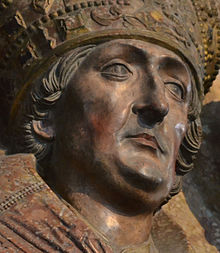

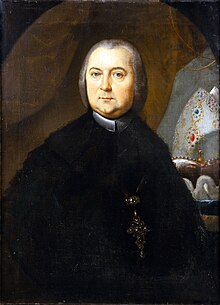
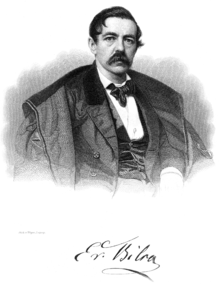
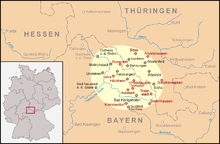
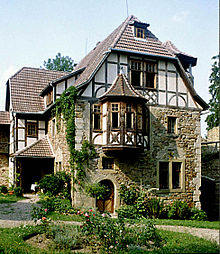




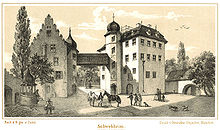
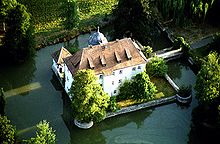
The House of Bibra (German: [ˈbiːbʁa]) was one of the leading Uradel (ancient noble) families in Franconia (northern part of Bavaria) and present day Thuringia from the mid-15th century to about 1600. Later on the family rose from Reichsritter (Imperial Knights) to Reichsfreiherr (Barons of the Holy Roman Empire). After the Holy Roman Empire dissolved, they were made ‘’Freiherr’‘ (Barons) of Bavaria and Bohemia.
The earliest references to the family include a document of Bishop Otto of Bamberg from the year 1119 of a Rupertus de Bibra. In 1151 a Pertholdus (Berthold) de Bibra and his sons Pertholdus (Berthold) and Tagino are referenced in another document. The family prospered in numbers, wealth, and influence in the 15th century and early 16th century. By the time of Siebmachers Wappenbuch of 1605, the family is listed as the most important family of Franconia under the rank of Freiherr. By 1600 most of the family died off without heirs partially due natural causes such as the Bubonic plague and the number of family members who took church positions. After the death of Heinrich von Bibra in 1602, the Prince-Bishop Julius Echter von Mespelbrunn seized most of the family’s assets as part of the Counter-Reformation resulting in a 79-year lawsuit. The lawsuit (Reichskammergericht) was eventually settled with the family receiving all the properties except Burgwallbach but without income during the suit. From 1602 on there were many important members of the family but the family itself never recovered the leading position it previously had in the late 15th and 16th centuries. Between 1698 and 1772, the various lines were raised to Reichsfreiherr (Barons of the Holy Roman Empire). In later times, the family spread to the Austrian Empire, the British Empire, and the United States. According to Wagenhöfer, the Bibra family is the most researched family of the low nobility in Franconia after the Guttenberg and Seckendorff families.
The tomb of Lorenz von Bibra by Tilman Riemenschneider (c. 1460 – 7 July 1531) in the Würzburg Dom (cathedral) is one of Riemenschneider's most famous works. Lorenz also commissioned Riemenscheider to do the tomb of his predecessor, Rudolf von Scherenberg. In Bibra the family commissioned Riemenschneider to do the Altar of the Apostles, Altar of the Church Fathers, Altar of the Annunciation, Carving of St. Kilian, a crucifix, and an epitaph of Hans von Bibra (Lorenz' father). Kilian von Bibra also commissioned a work by Riemenscheider other than at Bibra.
Family seat (Stammsitz):
Second seat:
Historical holdings still in family:
Estates, castles, manor houses, and villages that previously came under Bibra control (Germany unless otherwise stated):
German cities with close association:
Memorials:
Monasteries closely associated with Bibra family:
Australia
The Bibra coat of arms is incorporated into several municipalities.
For the last four centuries the family has divided itself between two Branches named after the two brothers whom all living Bibra descend: Valentine (1560–1595) and Bernhard (1562–1609). Within each branch, the family has divided further in Lines centered on castles and a manor house (Gleicherwiesen). The last two centuries, the Lines are as follows:
Valentine Branch
Bernhard Branch
All branches of the family were raised to Freiherr. Regarding personal names: Freiherr is a former title (translated as Baron). In Germany since 1919, it forms part of family names. The feminine forms are Freifrau and Freiin. In 1919, all nobility predicates were transformed into constituents of the family name in Germany.




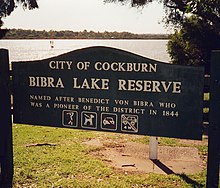
1357: The counts of Henneberg had the title to the office in 1357 transferred to the Bibra family, but then withdrawn and returned to it to the von der Kere family.
1405: In two contracts of 1405 and 1486, both families finally agreed on the alternating exercise of the office. When the Henneberg family renounced the Obermarschall of Würzburg in 1533 for political reasons, there were no more changes with the Untermarschallamt until the extinction of the Henneberg house in 1584.
1572: The sole right of succession claimed by the Bibra after the extinction of the von der Kere family in 1572 was contested by Prince Bishop Julius Echter of Mespelbrunn (ruled 1573–1617), and the share of the Kere family transferred to his own family. Until the extinction of the Mespelbrunn (1665), members of both families exercised an alternating office.
1665 -1803 (secularization): The Bibras stand unchallenged. Beginning in 1803, it became an "empty title" with no Prince-Bishopric.
The Erbntermarschallamt was held by the Familiensenior or Senior familiae (Family Senior) which is the eldest male member of the Bibra family when the family held the position. Friedrich Gotthelf (1736-1813, Brennhausen line) claimed office in 1783 (five years early) even though Prince Bishop Heinrich (1711-1788) was older but was unable to fulfill role.
Beginning in 1721, members of the Schabelwaid/Weisendorf line had the Erbuntertruchsess of the Prince-Bishopric of Bamberg. This officed ended in 1803 when then bishopric was secularized.
Bibran-Modlau family (Bibran, Bibra und Modlau, Bibra-Modlau) was a Silesian noble family which was raised to Reichsfreiherr (Imperial barons) 1624.
The family and the three sons-in-law of the apparent last Silesian Bibran-Modlau used multiple variations of the name including:
One source (Origines familiae Bibranorum in Francia orientali utraque Silesia et Lusatia ...) reports that the family descends from a Sigmund von Bibra (Franconian Bibra family) who traveled to Silesia in the 11th century, however the different coat of arms casts doubt on the connection.[2] The description with the published (c. 1860) print of Schloss Modlau describes the Bibran family as having split off from the Franconia Bibras five hundred years ago.[3] By 1480 Modlau and Profen were already in possession of the family. At the end of the family, it was centered at Reisicht and Modlau, in present-day Poland. Prominent members of the family were: Friedrich Heinrich von Bibran-Modlau, Abraham von Bibran Kittlitztreben und Woitsdorf, and Sigismund Heinrich von Bibran-Modlau who was one of the largest land owner in Silesia.
David Heinrich von Bibran-Modlau was the apparent last male member of the family in Silesia. When he died in 1828, he had three daughters. His three sons-in-law (von Kölichen, von Block and von Schönberg) incorporated the Bibran-Modlau into their names.[4] The son-in-law Ernst Heinrich von Kölichen, who had incorporated the Bibran-Modlau name and coat of arms died (1832) with a daughter, Agnes, but no sons. Ernst’s son-in-law, Ludwig von Senden again incorporated (c. 1836) the Bibran name into his own becoming "von Senden-Bibran" as in Gustav von Senden-Bibran.